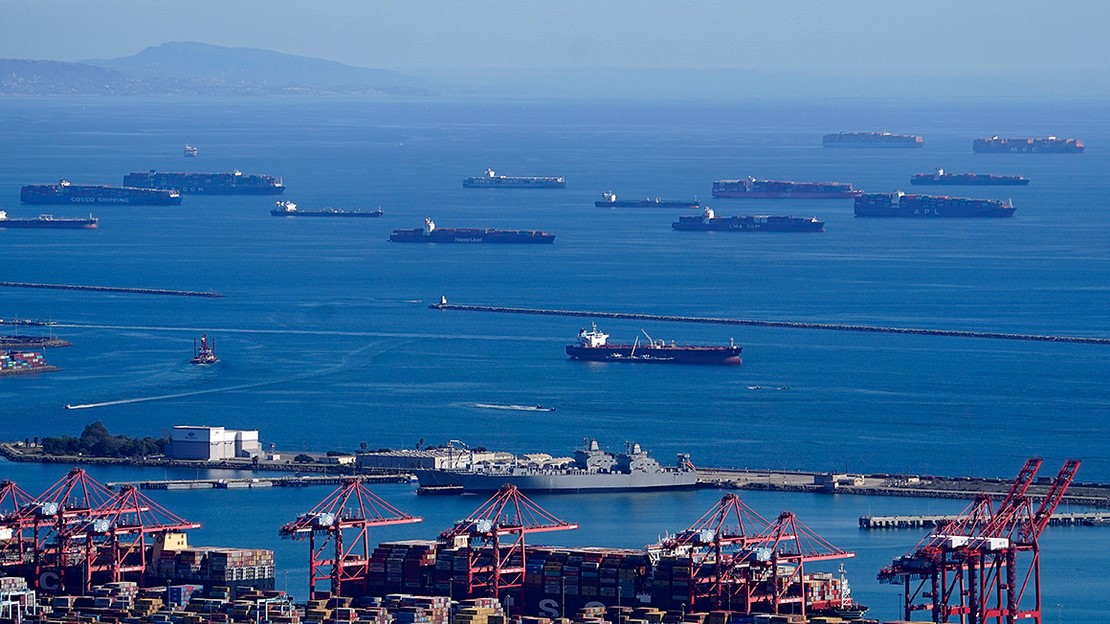Everyone remembers the eerie, apocalypse-like sight of empty shelf after empty shelf in the grocery store at the beginning of the pandemic. Stay-at-home orders combined with an immediate disruption of the supply chain sent people scrambling to stock up on an already limited inventory of items. The sight of toilet paper and paper towels on the shelves became as rare as finding an oasis in the desert, and equally as welcoming a sight. Today, we find grocery stores more-or-less back to normal and have little to no trouble locating the goods we need. Sure, we think to ourselves, some products may be taking longer to ship (usually from smaller companies) but at least Amazon Prime is still delivering in two days. From the consumer’s point of view, the supply chain appears to have righted itself, but this is merely a façade.
Several reasons for the sudden supply chain issues seemed obvious at the beginning of the pandemic. People had to stay at home. International travel was banned. Countless regulations and protocols were put into place. Suddenly getting goods from across the pond became more difficult, and there were less people to help at any step in the process of delivering what goods we did have to the consumer. But the pandemic merely exposed pre-existing trends that made the pandemic so fatal to the supply chain. America’s overseas dependence, the globalization of production, and the explosive boom of e-commerce all made an event like a nation-wide lockdown that much more fatal on the extraordinarily complicated and crucial production and delivery of goods that we have so plainly coined “the supply chain”.
If any piece of the supply chain breaks, the whole thing can be disrupted. When every piece of the supply chain breaks, all hell breaks loose. The pandemic did just that. In what felt like overnight, companies couldn’t get the desired amount of inventory shipped from overseas. Factories that processed the raw materials shut down, sending workers home. Plants that took in these raw materials and generated components shut down. Facilities that created the final product shut down. And, perhaps most crucially of all, the people that get the goods from point A to point B weren’t working. Companies across the nation were left questioning, “How on Earth am I going to get my product on a shelf?”
The answer was not to their liking. Companies did manage to get their products on shelves, after investing copious amounts of time, effort, and money into reforging the links of the supply chain. The process was complicated by mandated health and safety protocols, a severe labor shortage, and rising costs. Though we, the consumer, feel assured that things are returning to normal as we see fully stocked shelves at our local store, we are missing the behind-the-scenes cost and effort companies had to put in in order to provide the semblance of normalcy.
What does this have to do with CRE? Surprisingly, everything. These companies made massive investments in order to localize their supply chain and address the issue of global dependence.
One of the first results of the pandemic shutdowns was that companies looked to build up inventory. The supply chain economy saw a “shift from a ‘just-in-time’ inventory strategy to a ‘just-in-case’ supply chain strategy.”[1] Unsure of when the next shipment may be coming in, companies looked to build up stores of product. There was a 5-10% increase in inventory as companies pivoted to keeping 30-45 days of inventory on hand, as opposed to the pre-pandemic normal of two weeks.[2] Higher inventory means higher demand for space, and this has been reflected in the high volume of industrial transactions and development over the last year.
Companies, realizing the danger of international dependence, are turning to local production, building plants and facilities in the US in order to have a reliable supply of components. Rising transportation costs, in part due to labor shortages, are causing companies like Amazon to buy or lease fulfillment centers in an attempt to decrease shipping costs. The demand for fulfillment centers, storage facilities, and production plants has put huge pressure on industrial space, and the supply is racing to catch up. Though developers are racing to provide space, there simply isn’t enough space suited to the needs of these pandemic-induced supply chain issues. Logistics experts predict that this increased demand for industrial warehouse and distribution space could add more than 1 billion square feet of incremental demand for new space over the next 5 years.[3] This addition of completely new development will have long-term impacts on CRE as owners and companies attempt to figure out what to do with the space after the supply chain crunch loosens.
The news isn’t all bad, though, at least for Midwest markets. The Midwest industrial real estate market has benefited from the supply chain disruption. As companies scrambled to find accommodating property, space in hot spots like the Inland Empire, NYC, and New Jersey quickly became leased. Firms like Amazon turned an eye on the cheaper, more available Midwest. Amazon has plans to open several massive distribution centers across Michigan and Indiana, adding thousands of jobs to the region while decreasing their transportation costs and ensuring a smooth (or at least, smoother) delivery process. Indianapolis, traditionally a strong air and freight hub for logistics, is seeing increased deal traffic as companies utilize its central location to optimize their supply chain routes.[4]
The supply chain disruption’s impact on CRE is here to stay. The pandemic opened our eyes to the danger of global dependence for production. More and more firms are weighing the benefit of producing in America itself, and demand for industrial space will continue to reflect this. Furthermore, the e-commerce boom only gained more traction as America went virtual. Companies are unlikely to scale back their logistical upgrades as they realize the benefit of spreading distribution facilities across the country. The Midwest can expect continued activity as companies seek to avoid high-cost coastal areas and look to a region with lower land costs, cheaper production, and more readily available labor.
[1] ICYMI: How the Supply Chain Crisis Impacts Industrial Real Estate – Commercial Property Executive (commercialsearch.com)
[2] ICYMI: How the Supply Chain Crisis Impacts Industrial Real Estate – Commercial Property Executive (commercialsearch.com)
[3] ICYMI: How the Supply Chain Crisis Impacts Industrial Real Estate – Commercial Property Executive (commercialsearch.com)
[4] ICYMI: How the Supply Chain Crisis Impacts Industrial Real Estate – Commercial Property Executive (commercialsearch.com)



